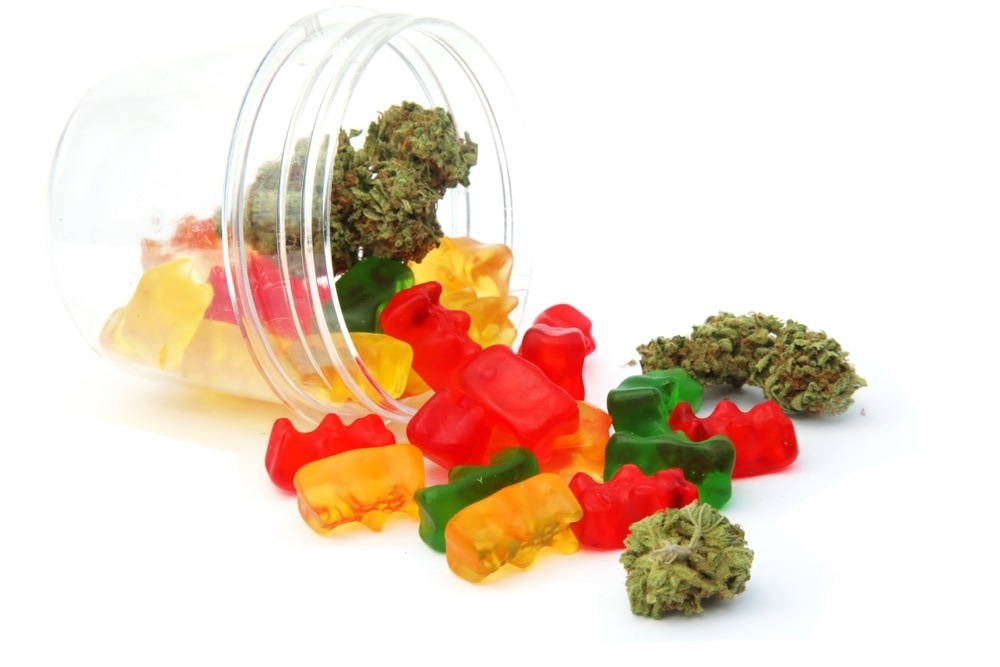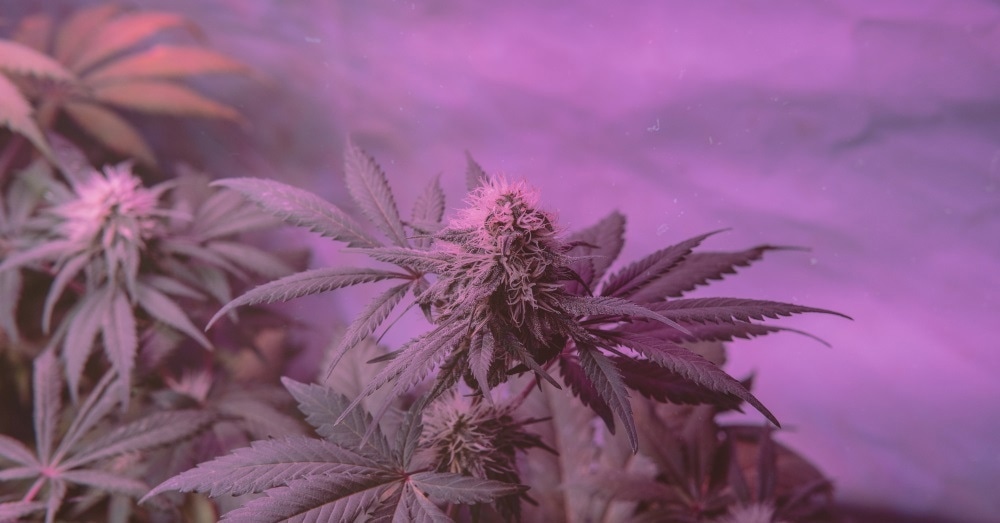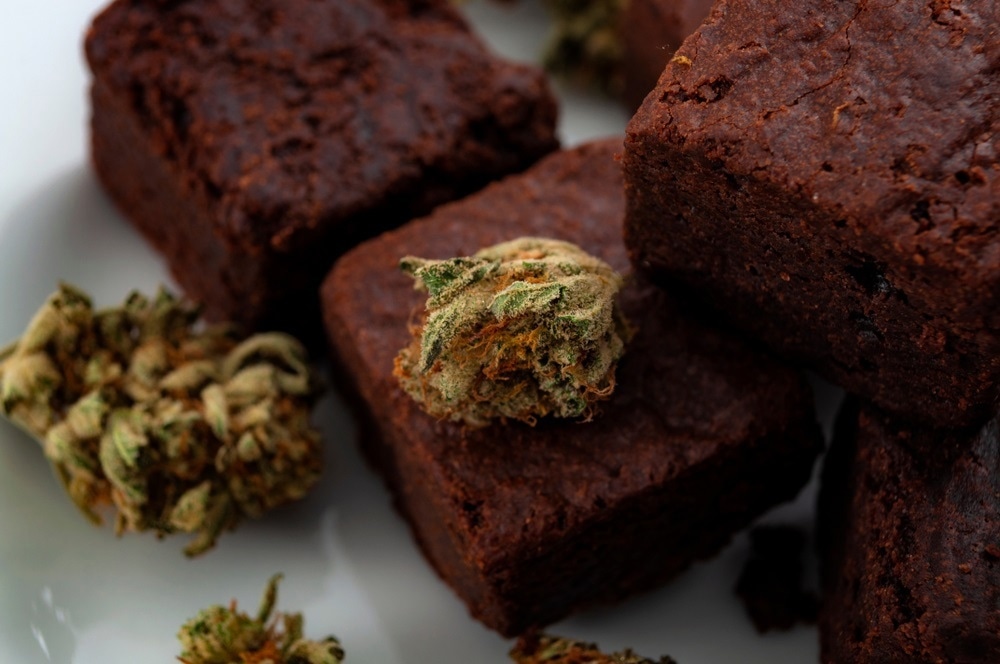Sponsored Content by PittconJun 12 2020
Marijuana-infused edibles or medibles have increased immensely over the last 10 years. With products such as brownies, gummy bears, and chocolate infused with marijuana, it is more important now than ever to test these cannabis-related products.
In this interview, Dr. Carl Wolf talks to News-Medical Life Sciences about his work and research into determining cannabinoids in marijuana-infused edibles.
In the last decade, cannabinoid use in the US has increased tremendously. Marijuana-infused products are one of the cannabis products that have seen the biggest increase. Can you explain why?
Marijuana for a long time has been considered to have medicinal properties and people are looking at that going, "Can I fix my issue with it?" I think we're always looking for something new that's better. People say it's organic. I say there are lots of things that are organic and we shouldn't be eating or taking them into ourselves.
The real push now is that as the US population gets older, we have more ailments and we're under the philosophy that there should be something out there that can fix us.
We're looking for more ways to reduce pain, to make ourselves feel better, and to get ourselves back to the way we felt 20 or 30 years ago.

Image Credit: Shutterstock/mikeledray
Cannabis-infused food products or medibles are sold for medicinal and recreational activities. They contain the psychoactive drug delta-9-tetrahydrocannabinol (THC) and cannabidiol (CBD) and other cannabinoids. Why is it important to test for these products?
It's because there are many other components also, and there are no regulations, guidelines, or standards and you don't know what's in these products.
As it is a natural product, no two plants are the same. No two parts of the plant are the same. Even if you're just looking at the buds of the plant, no two buds are exactly the same.
You're getting a variety of different concentrations of different drugs and different compounds. Some of the effects, the reported effects, or the expected effects, sometimes do not just come from one compound. They come from a combination and then from the right ratio. If you have no idea what's in there to start with, then testing is very important.
For the medibles aspect, we've done testing on several things. You're under the assumption that it was made to what the labeling states on the package and as we have tested several things, we found that that is not always the case.
There's a high incidence in probably about two-thirds of the products, not just from our research but in published research, that shows that it's either too high, too low, or it's not even there.
Accurate methods to determine THC and CBD content in edibles is a high priority. What role does analytical chemistry play in determining these contents?
We're the ones doing the work. We're the chemists. We're considered as the experts on how to do testing through analysis. I conduct analysis on biologicals, mainly blood, urine, liver tissue, and other things. That's where the importance of our work comes in because we're the ones with the knowledge to understand that they're cannabinoids and other constituents, where other people say marijuana as a singular term.
Food is a wide variety of things that you can see by just walking into the grocery store and we know that each one acts a little bit differently. Having standardized methods or at least guidelines on how to deal with testing is very important.
Especially in our work, we've seen big issues with that. Sugar matrices are not the same as fiber matrices which are not the same as chocolate or fat matrices. Brownies, gummies, and dark chocolate do not act the same. You can see that by just looking at them physically, therefore they may need different testing schemes to analyze them.

Image Credit:Shutterstock/ Infinity Time
THC is the main psychoactive compound in marijuana that gives the ‘high sensation’. Accurate methods to determine it's content is a high priority. What are the best analytical methods to determine THC?
That depends on which matrix you're talking about. That's the true question as we've seen it. Depending on what the substance or basic substance you're looking at is, it has a big effect on whether you can recover it and if you can accurately quantitate how much is present. As I said, brownies, gummies, and chocolate or high fiber foods, high sugar foods, and high-fat foods, all act differently in analysis.
If you try to use the same extraction method, it may work for one but not the other. If you have not done any method development or validation, assuming that it works for them all is not a good thing.
Last summer we spent time analyzing and testing beverages. What we found was, that the method we developed for doing food products doesn't work for beverages. In beverages, you had high sugar content foods that acted completely different than brewed things like tea and coffee, or alcohol like beer and wine for example. There is no single method for doing cannabinoids in all matrices.
Quality Control for Medical Cannabis
Cannabinoid testing is supported by the National Justice (NIJ) Research and Development in Forensic Science for Criminal Justice. Why?
They're great because this gives us an opportunity that other agenies don't. NIJ supports law enforcement which has different priorities in the United States than the National Institute of Health (NIH) or some of the other federal agencies that people receive grant money from. The NIH is not going to pay for Schedule 1 substance testing methods because the substances are restricted and not readily available for use by a wide variety of laboratories.
On the NIJ side, you're talking about law enforcement, real, daily life things that are going on and are becoming more prevalent throughout communities. We've seen increases in people taking medibles and other products,and drugs that are out there, and these are very relevant to public safety as a whole.
Can you tell us about your work into this NIJ funded research?
We originally were awarded a grant at the end of 2016, and which started in 2017. At the height of the opioid epidemic going on here in the United States, we were looking at the best way to analyze opiates in postmortem liver tissue because there were several reported methods out there that people said, "Oh, we did this, and we got a result." But we were like, "So does the method even work for the same class of drugs?"
We looked at 12 different ways to analyze liver tissue and found out, that even though opiates are a generally simple class and they're very similar compounds, they don't act the same way with each extraction method. Some of the methods which were designed for doing urine or blood didn't work well for liver tissue or liver homogenous, as we would expect
As we went forward with current project, I call it the Medible Project or the Brownie Project, we said, "Okay, let's look at this first: does the method work for extracting cannabinoids?"
We were looking at nine different cannabinoids with three different isotopically labeled standards for quantitation, and we found out that each of the methods we looked at were not quite the same.
As you would expect, we saw a difference chemically between each cannabinoid for extraction efficiency. We also saw issues with different methods that just didn't seem to work very well across all the three matrices we were looking at.

Image Credit:Shutterstock/ content_creator
Can you tell us about the work you will be presenting at Pittcon in your presentation ‘Evaluation of 25+ Techniques for the Determination of Cannabinoids in Marijuana-Infused Edibles’?
This was 25 plus ways. It should have said 25 ways not to analyze cannabinoids in marijuana-infused products. My student and I did a beverage project last summer, and she said she did 40 ways not to analyze cannabinoids in beverages, but this one was submitted first. The negative is not always well received in science.
People say, "You can't publish negative data." And I respond, "But the problem we run into is that people don't publish." People have methods that they present, but they never really show you or they never put it in the publication as well, what didn't work? How did I get from point A to point B? There's no reason to reinvent the wheel in many of the things we do in science. That's why we have publications and literature for that.
What I'm presenting is 25 plus ways not to analyze cannabinoids in marijuana-infused products. We wanted to look at different techniques that were available from manufacturers and publications to see what worked and didn't, before we came up with anything on our own. We wanted to use what's out there in the literature for people to describe ways we can analyze cannabinoids.
We looked at many manufacture's methods, and if there wasn't one that already was available for doing food products and then we said, "Okay, someone will take urine or a blood product and say, ‘I can now do this with a food product.’" That was our premise. We evaluated at many different ways and we basically couldn't find anything that worked. We got to 20 some methods and it was like, "Okay, this is not working."
We had some collaboration with a couple of manufacturers who said, "Well, try this with our product. Try that. Try changing the pH. Try changing the dilution solvents." We got results that were a little bit better, but it wasn't really what we wanted. We were not impressed.
Then another manufacturer called and said, "Hey, I'm the new sales guy. What can I do for you?" I said, "Well, send me a quote and I want to buy some. Send me a method that you have." We tried their method and said, "No, it doesn't work just as well as the other ones."
We used the knowledge that we had learned from other manufacturers and said, "Okay, now we can play with things and we have an understanding of how the QuEChERS method works." After tweaking, we were like, "Okay, this looks a whole lot better than anything else we've done." That was what I was presenting today, what works and what doesn't work.

Image Credit:Shutterstock/Victor Moussa
As the world and society continue to evolve so will the role of cannabis. Looking into the future do you see medibles evolving further?
I see them becoming, I don't want to say more mainstay, but more accepted. Food products are more accepted than the other formulations. You don't see people smoking that much on the street.
You're not going to be carrying a joint around with you and with perception people are not going to do this as part of their home life. Food is a lot easier to transport and conceal. It is just easier to transport cannabinoids in a food product and food is part of our lives. We live for food lots of times. I don't see these products going away.
Why are events like Pittcon important for the work you are doing?
Pittcon is the largest laboratory exhibition in North America with a wide variety of manufacture's and individuals presenting.
My job is running a forensic and clinical testing laboratory, but that also involves research. New drugs come out; new things come out. We need to look at new ways of doing analysis. We do pharmaceutical testing in the same way, too. It's a question of: what's the best thing out there currently that we can get our hands on?
We may not be able to buy it, but we may be able to borrow it from someone else or benefit just by knowing what's going on and being cutting edge is one way to say it. Maybe not the correct way but being cutting edge or at least knowing what's going on in the world of laboratory science is very important, and Pittcon to the best of my knowledge presents that very well.
The Pittsburgh Conference is to bring people together from various laboratory facets. This is to get you outside of your box. I go to a couple of other meetings that are more forensic in nature, forensic toxicology or forensic science in nature, and you're only dealing with people who are in your discipline, so you don't get to see outside of the box which is good, but a hinderence at times.
As I say, you go through with horse blinkers on saying “What's in front of me?” Maybe you can see a little bit to the side, but these are places where you can go and talk to people who are doing other things that may be relevant to what you're doing or maybe in a couple of years down the road may be relevant, which is very important and keeps us diversified.
When I have students and they come to conferences, I say, "Go talk to everybody, because you don't know where you're going to be in five years or you don't know what projects you will be working on once you leave me." They might say, "Oh, so-and-so has this. We could get it from there." Or someone may be willing to collaborate with you and say, "Let's run some samples. Let's see how this works," which moves the project forward and advances science.
About Carl Wolf
Dr. Wolf received his BS in Chemistry from Gannon University, Erie, Pennsylvania in 1986, where he received the CRC Press’ Outstanding Freshman Chemist Award. Dr. Wolf received his MS in Criminal Justice, with a Forensic Science option from Virginia Commonwealth University in 1994, and received his Ph.D. in Pathology, with a focus on Forensic Toxicology from the Medical College of Virginia Campus at Virginia Commonwealth University in 2005.
 Dr. Wolf has been employed at the Medical College of Virginia Hospitals / VCU Health since 1987 in various roles in the Clinical and Forensic Toxicology Laboratories. Dr. Wolf regularly consults and/or lectures on toxicology and drug testing issues. Dr. Wolf has given expert testimony in several jurisdictions in the Commonwealth of Virginia and the State of North Carolina. Dr. Wolf has contributed to over 100 presentations and 40 peer-reviewed publications. Dr. Wolf is a full member of the Society of Forensic Toxicologists, and the International Association of Forensic Toxicologists. Dr. Wolf is a Fellow of the American Board of Forensic Toxicology. Dr. Wolf was a member of the group that received the 2007 Educational Innovation Award from the School of Medicine at the Medical College of Virginia Campus of Virginia Commonwealth University for their work on developing and maintaining an on-line continuing education program for chronic non-malignant pain management curriculum. In 2017, Dr. Wolf received a grant from the National Institute of Justice (NIJ) to study the matrix effects that liver tissue has on the analysis of opiates using ten different sample preparation techniques, and in 2018, he received a NIJ grant to study the stability of cannabinoids in marijuana infused edibles.
Dr. Wolf has been employed at the Medical College of Virginia Hospitals / VCU Health since 1987 in various roles in the Clinical and Forensic Toxicology Laboratories. Dr. Wolf regularly consults and/or lectures on toxicology and drug testing issues. Dr. Wolf has given expert testimony in several jurisdictions in the Commonwealth of Virginia and the State of North Carolina. Dr. Wolf has contributed to over 100 presentations and 40 peer-reviewed publications. Dr. Wolf is a full member of the Society of Forensic Toxicologists, and the International Association of Forensic Toxicologists. Dr. Wolf is a Fellow of the American Board of Forensic Toxicology. Dr. Wolf was a member of the group that received the 2007 Educational Innovation Award from the School of Medicine at the Medical College of Virginia Campus of Virginia Commonwealth University for their work on developing and maintaining an on-line continuing education program for chronic non-malignant pain management curriculum. In 2017, Dr. Wolf received a grant from the National Institute of Justice (NIJ) to study the matrix effects that liver tissue has on the analysis of opiates using ten different sample preparation techniques, and in 2018, he received a NIJ grant to study the stability of cannabinoids in marijuana infused edibles.
About Pittcon
 Pittcon® is a registered trademark of The Pittsburgh Conference on Analytical Chemistry and Applied Spectroscopy, a Pennsylvania non-profit organization. Co-sponsored by the Spectroscopy Society of Pittsburgh and the Society for Analytical Chemists of Pittsburgh, Pittcon is the premier annual conference and exposition on laboratory science.
Pittcon® is a registered trademark of The Pittsburgh Conference on Analytical Chemistry and Applied Spectroscopy, a Pennsylvania non-profit organization. Co-sponsored by the Spectroscopy Society of Pittsburgh and the Society for Analytical Chemists of Pittsburgh, Pittcon is the premier annual conference and exposition on laboratory science.
Proceeds from Pittcon fund science education and outreach at all levels, kindergarten through adult. Pittcon donates more than a million dollars a year to provide financial and administrative support for various science outreach activities including science equipment grants, research grants, scholarships and internships for students, awards to teachers and professors, and grants to public science centers, libraries and museums.
Visit pittcon.org for more information.